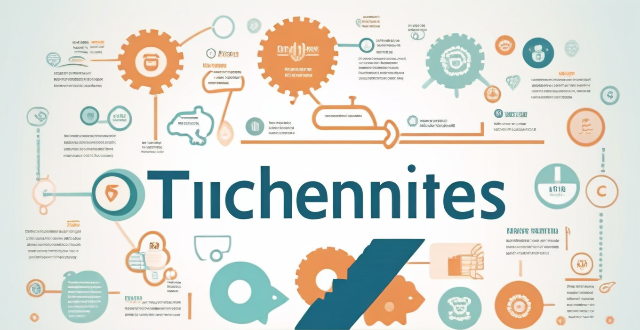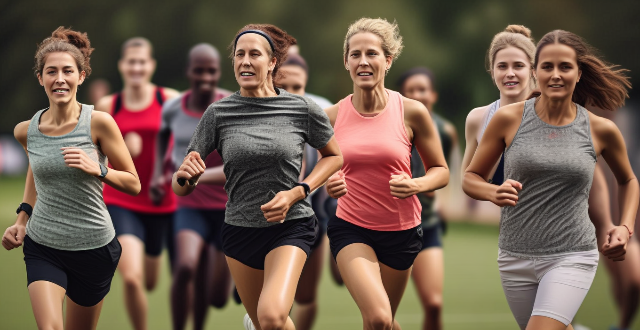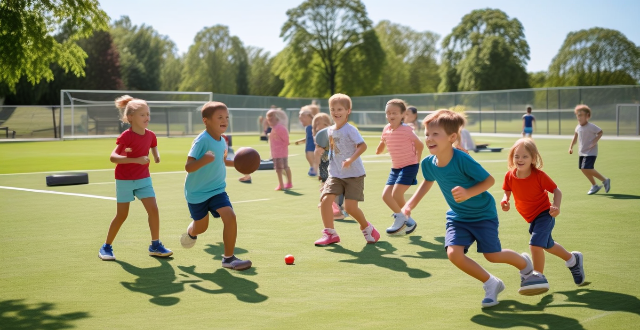Teenager Adolescence

How can I find the best gift for a teenager who has everything ?
When finding a gift for a teenager who seemingly has everything, consider their interests and hobbies, look for personalized items, think outside the box with unusual or quirky presents, and ask for recommendations from those who know them well.

How do I educate my teenager about budgeting and money management ?
Teaching your teenager about budgeting and money management is crucial for their financial independence and future success. Start with basic concepts, provide an allowance to practice, set financial goals together, introduce banking and investment principles, use technology, lead by example, encourage part-time work, discuss credit and debt, and plan for the future. This continuous process requires patience, consistency, and practical examples to set your teen on a path to financial stability.

What is the role of sports in character building during adolescence ?
The article discusses the significant role sports play in character building during adolescence. Sports contribute to physical health and self-discipline, teamwork and social skills, goal setting and perseverance, responsibility and time management, emotional intelligence and stress management abilities. Engaging in sports not only benefits young individuals physically but also shapes their personality and values, preparing them for success in all aspects of life.

What role do parents play in the development of their adolescent children ?
Parents play a crucial role in the development of their adolescent children by providing emotional support, guidance and discipline, educational support, promoting healthy lifestyle habits, aiding in social development, and shaping moral and ethical values.

How do sports help in the emotional regulation of teenagers ?
Adolescence is a period of significant emotional, physical, and psychological changes. Sports can play a crucial role in helping teenagers regulate their emotions effectively by promoting physical health, developing social skills, building self-esteem and confidence, providing an outlet for emotions, and teaching discipline and responsibility. Encouraging teenagers to participate in sports is an investment in their overall wellbeing and future success.

What are the common challenges faced by teenagers during their developmental stage ?
The text discusses the common challenges faced by teenagers during their developmental stage, including physical changes such as body image issues and puberty, emotional changes such as mood swings and stress and anxiety, social changes such as peer pressure and bullying, academic pressure such as high expectations and time management, and identity development such as self-discovery and future planning. These challenges can have a significant impact on a teenager's overall development and well-being, and it is essential for parents, teachers, and caregivers to provide support and guidance during this critical stage of growth.

What are the benefits of participating in sports for teenagers' mental health ?
Participating in sports can have numerous benefits for teenagers' mental health, including improved self-esteem and confidence, reduced stress and anxiety, enhanced social skills and relationships, and improved sleep quality. Encouraging teenagers to engage in sports can be an effective way to support their overall mental well-being and promote healthy development during adolescence.
![Is [insert celebrity name] a self-made success or do they have a formal education ?](/images/3nde/10def976-67ae-42b5-9f15-aa12506245f4.png)
Is [insert celebrity name] a self-made success or do they have a formal education ?
The article discusses the educational background and career path of a celebrity, [insert celebrity name], to determine if they are a self-made success or have a formal education. The celebrity was born on [insert date] in [insert location] and showed an interest in [insert field/hobby] during their childhood and adolescence. Despite pursuing formal education at [insert school/university], they continued to pursue their passion and eventually gained recognition for their unique style and approach to [insert field/hobby]. The article concludes that the celebrity is both a self-made success and has a formal education.

Is there a correlation between playing sports and reduced risk of obesity in adolescents ?
The text discusses the correlation between playing sports and reduced risk of obesity in adolescents. It defines obesity as an excessive accumulation of fat that poses a risk to health and is typically assessed using body mass index (BMI). The importance of physical activity, particularly sports participation, in preventing obesity during adolescence is highlighted. Numerous studies have found a positive correlation between sports participation and reduced obesity risk, with mechanisms including increased energy expenditure, muscle development, improved dietary habits, and psychosocial benefits. However, potential limitations such as selection bias, cultural variations, and gender differences should be considered. Encouraging sports participation among adolescents could be an effective strategy for combating obesity, but it should be part of a broader approach that includes education on nutrition and other forms of physical activity.

What are some of the most memorable moments in sports movies ?
Sports movies often showcase the triumphs and struggles of athletes, capturing our hearts and inspiring us to be our best selves. Here are some of the most memorable moments in sports movies: 1. The Miracle on Ice (Miracle, 2004) - Herb Brooks coaching the 1980 U.S. men's Olympic hockey team to victory over the Soviet Union during the Cold War. 2. Rocky Balboa's Victory (Rocky, 1976) - Sylvester Stallone stars as an underdog boxer who gets a chance to fight for the world heavyweight championship. 3. The Blind Side (The Blind Side, 2009) - Sandra Bullock stars as Leigh Anne Tuohy, who adopts Michael Oher, a homeless teenager with a troubled past, and helps him become a successful football player. 4. Remember the Titans (Remember the Titans, 2000) - Denzel Washington stars as Herman Boone, an African American coach tasked with integrating a newly formed high school football team in Virginia during the civil rights era. 5. Hoosiers (Hoosiers, 1986) - Gene Hackman stars as Norman Dale, a basketball coach who takes on the challenge of leading a small-town Indiana high school team to victory in the state championship.

How does sports affect the physical development of adolescents ?
Sports during adolescence positively impact physical development by enhancing muscular strength, improving bone density, promoting coordination and balance, managing body composition, benefiting cardiovascular health, and fostering mental well-being. Additionally, they encourage active lifestyle habits and social interaction, setting a foundation for lifelong health and wellness.

What are the key factors that contribute to healthy adolescent development ?
Adolescence is a critical period of transition between childhood and adulthood, characterized by significant physical, cognitive, emotional, and social changes. Healthy development during this stage involves several key factors that support adolescents in navigating these changes successfully. The main elements include physical health (nutrition, exercise, sleep), emotional health (self-esteem, stress management, emotional regulation), cognitive development (education, mental stimulation, decision-making skills), social development (peer relationships, family relationships, role models), safety and security (physical safety, emotional safety, financial security), opportunities for growth (extracurricular activities, volunteer work, cultural experiences), and resilience and adaptability (problem-solving skills, flexibility, support systems). Addressing these key factors can significantly contribute to the overall health and success of adolescents as they transition into adulthood.

Are there any special considerations for creating an emergency kit for children ?
Special considerations for creating an emergency kit for children include age-appropriate items, comfort items, snacks and water, clothing and footwear, and entertainment. It is important to tailor the contents of the kit to the child's needs and abilities, and include items that can help to calm and reassure the child during an emergency situation.

Can early specialization in a single sport hinder overall development in adolescents ?
This text discusses whether early specialization in sports can hinder the overall development of adolescents. It considers physical, psychological, and educational impacts, arguing that while early specialization may offer a path to athletic success, it can also lead to overuse injuries, psychological strain, limited social interaction, and neglect of education. The text advocates for participation in multiple sports during adolescence to promote more balanced and holistic development.

What are the potential risks associated with children specializing in one sport too early ?
Specializing in a single sport at an early age can have both advantages and disadvantages for children. While it may lead to improved skill development and potential for higher-level competition, there are also several potential risks associated with this approach. These include physical risks such as overuse injuries, burnout, and lack of cross-training benefits; psychological risks like pressure and stress, narrowed social experiences, and fear of failure; developmental risks including delayed skill development, loss of childhood, and reduced adaptability; social risks such as isolation, peer pressure, and limited life skills; and academic risks such as time management challenges and prioritization issues. To mitigate these risks, experts often recommend encouraging diverse participation in sports until late adolescence, ensuring a balanced approach between sports, school, and leisure time, providing access to mental health resources for athletes dealing with stress and pressure, and involving parents in a supportive but not pushy way.

How can parents encourage their teenagers to engage more in sports activities ?
This text offers advice for parents on how to encourage their teenagers to engage more in sports activities. It suggests setting a good example, encouraging without forcing, providing necessary support, highlighting benefits, making it social, finding the right fit, setting achievable goals, and staying involved without being overbearing. The goal is to make physical activity enjoyable for teens rather than a chore.

What are some successful examples of youth-led climate action initiatives ?
This article discusses successful youth-led climate action initiatives around the globe, highlighting examples like Fridays for Future, US Youth Climate Strike, and Earth Uprising. These movements have achieved significant milestones in raising awareness, inspiring policy changes, and fostering collective action towards addressing climate change.

What is the importance of sleep in the development of teenagers ?
Sleep is crucial for teenagers' physical, mental, and emotional development. It aids growth, strengthens the immune system, and helps with weight management. Adequate sleep improves memory, cognitive function, and emotional regulation. It also reduces stress, enhances social interaction, and boosts self-esteem. Parents should encourage good sleep habits to support their teenagers' healthy development.